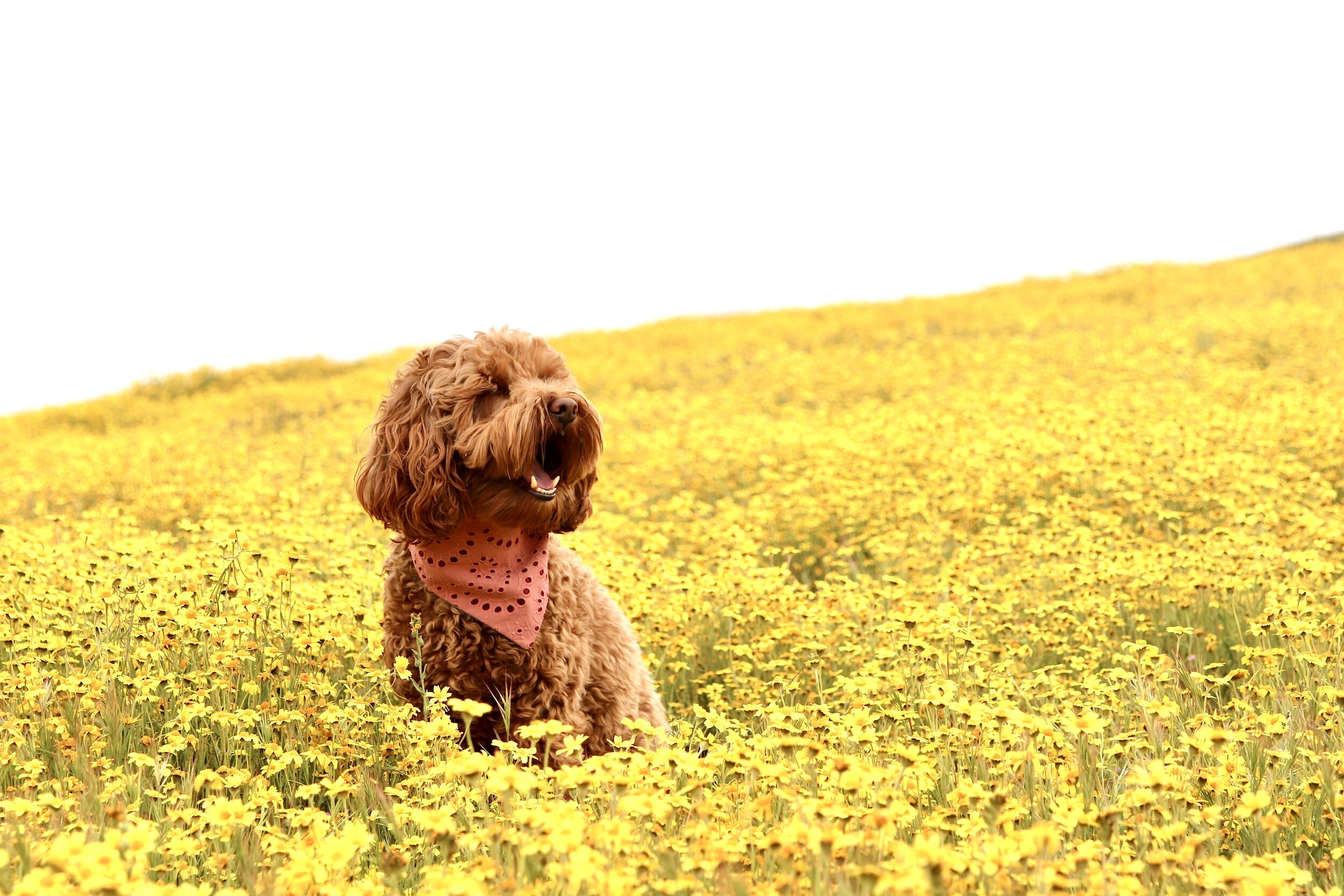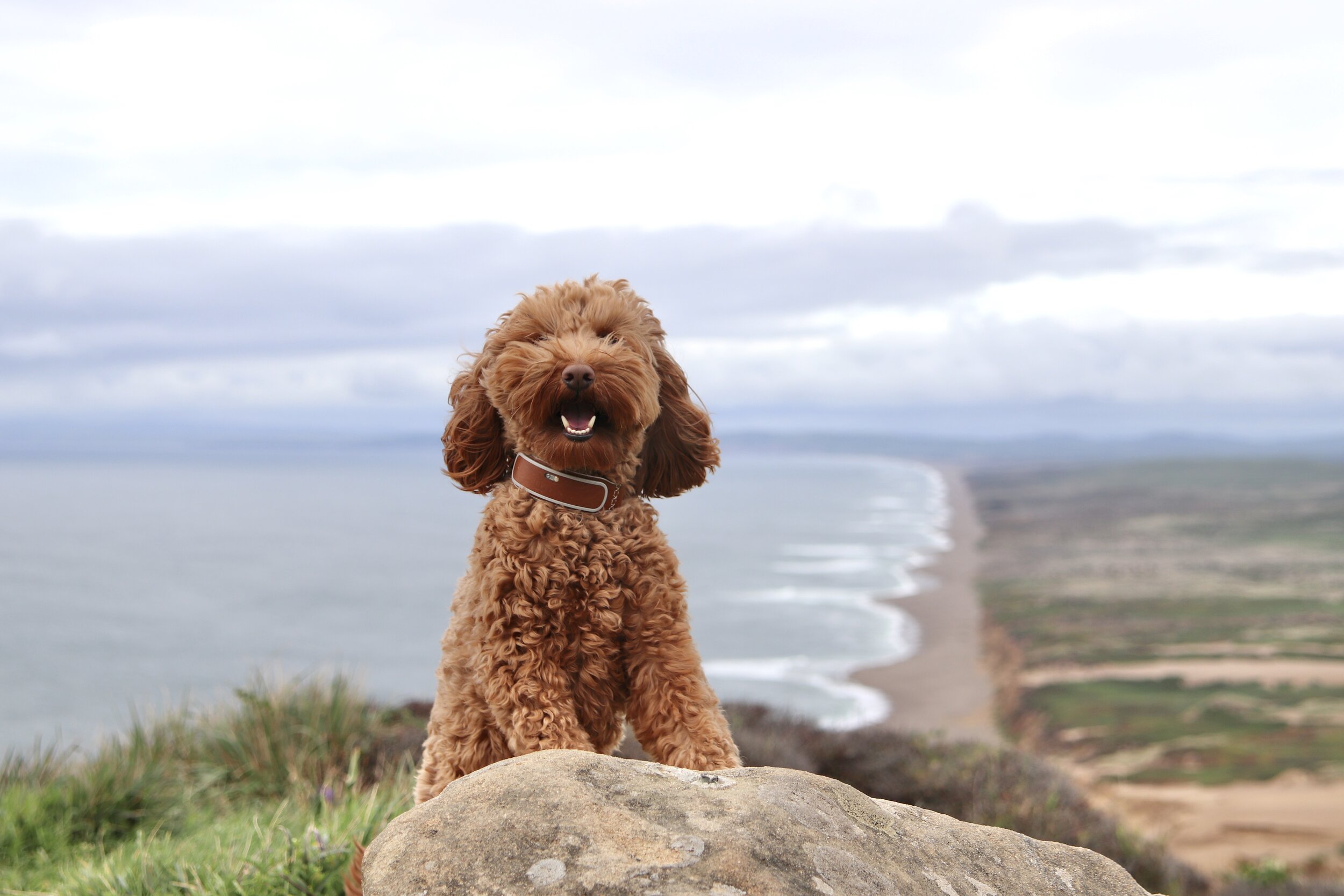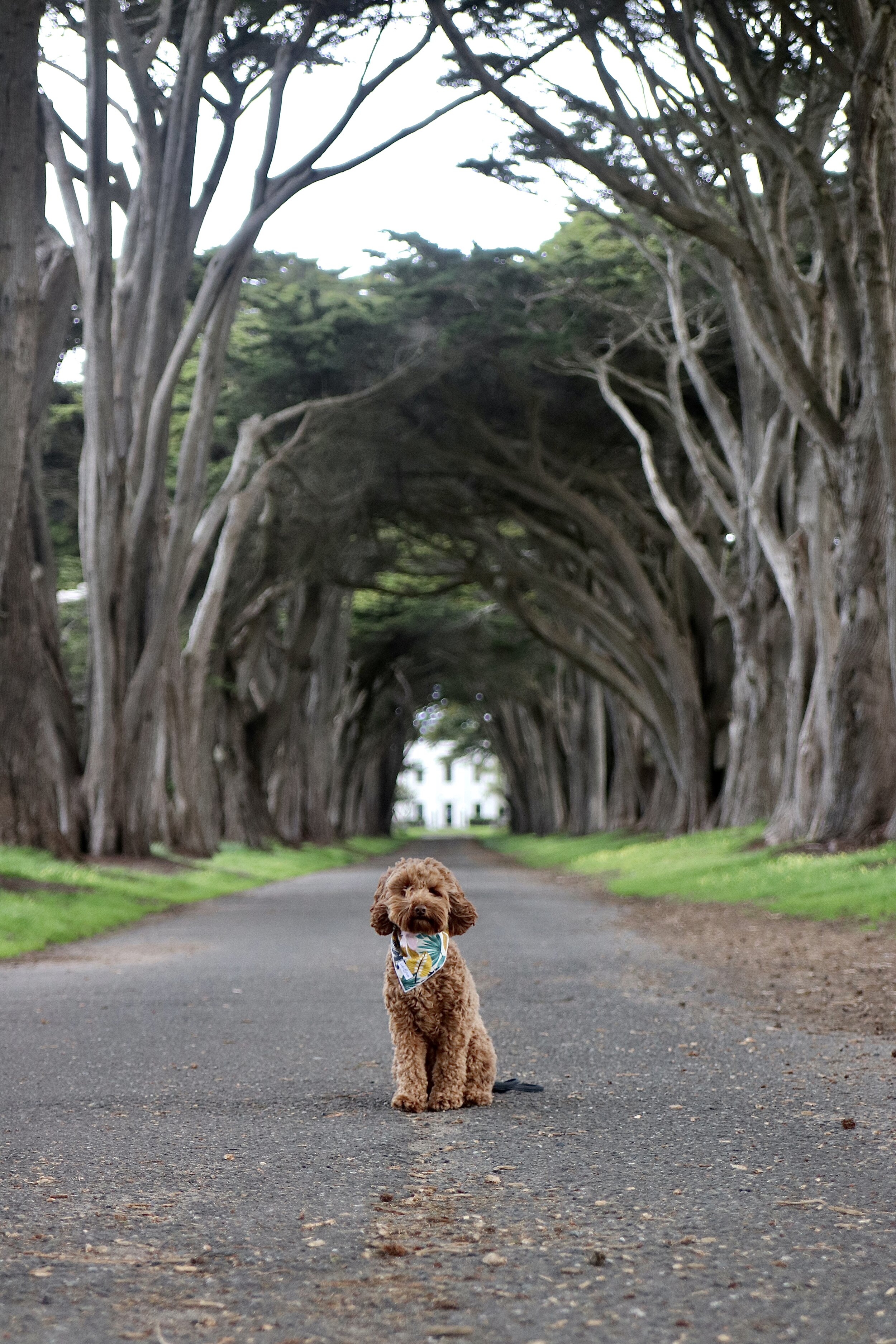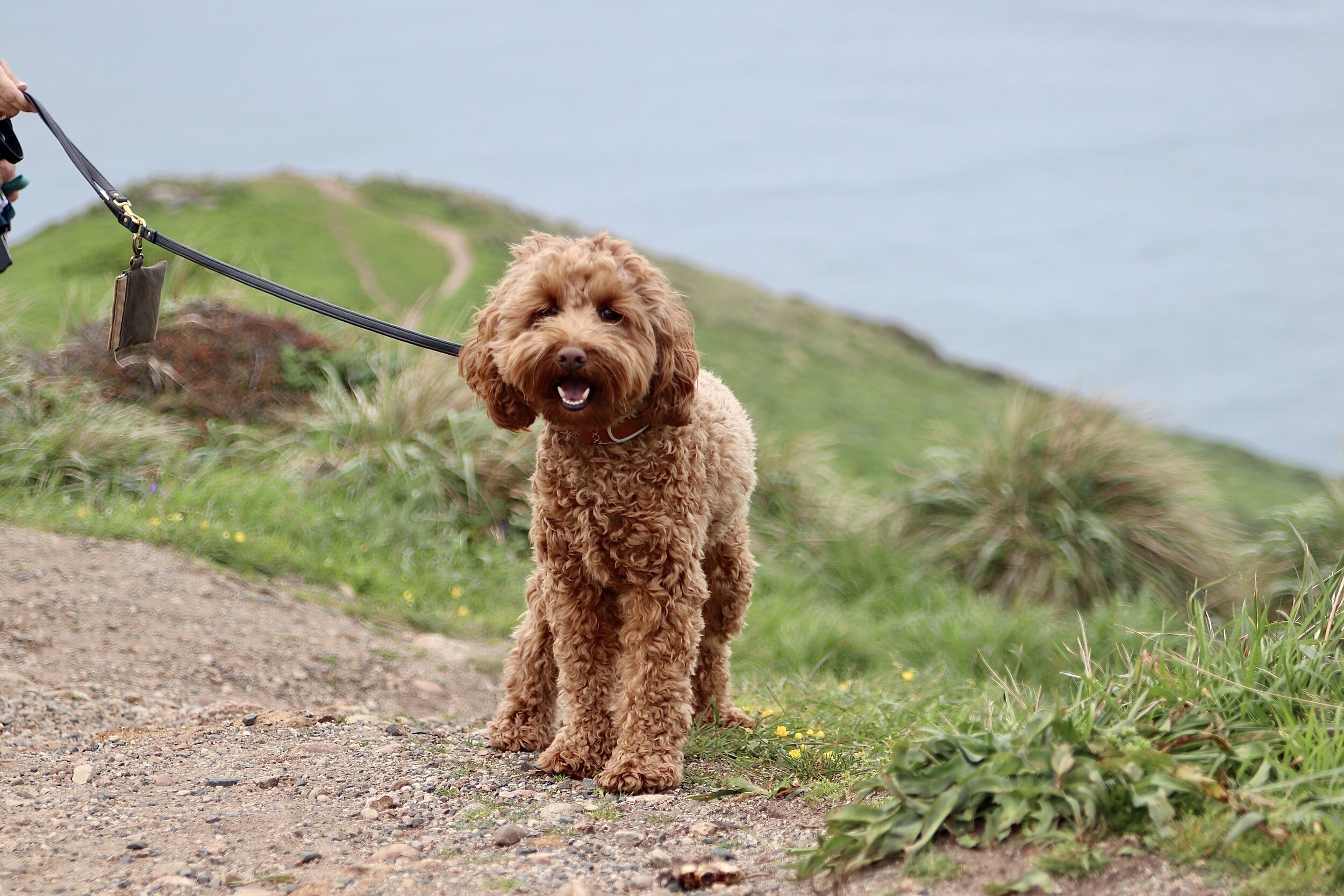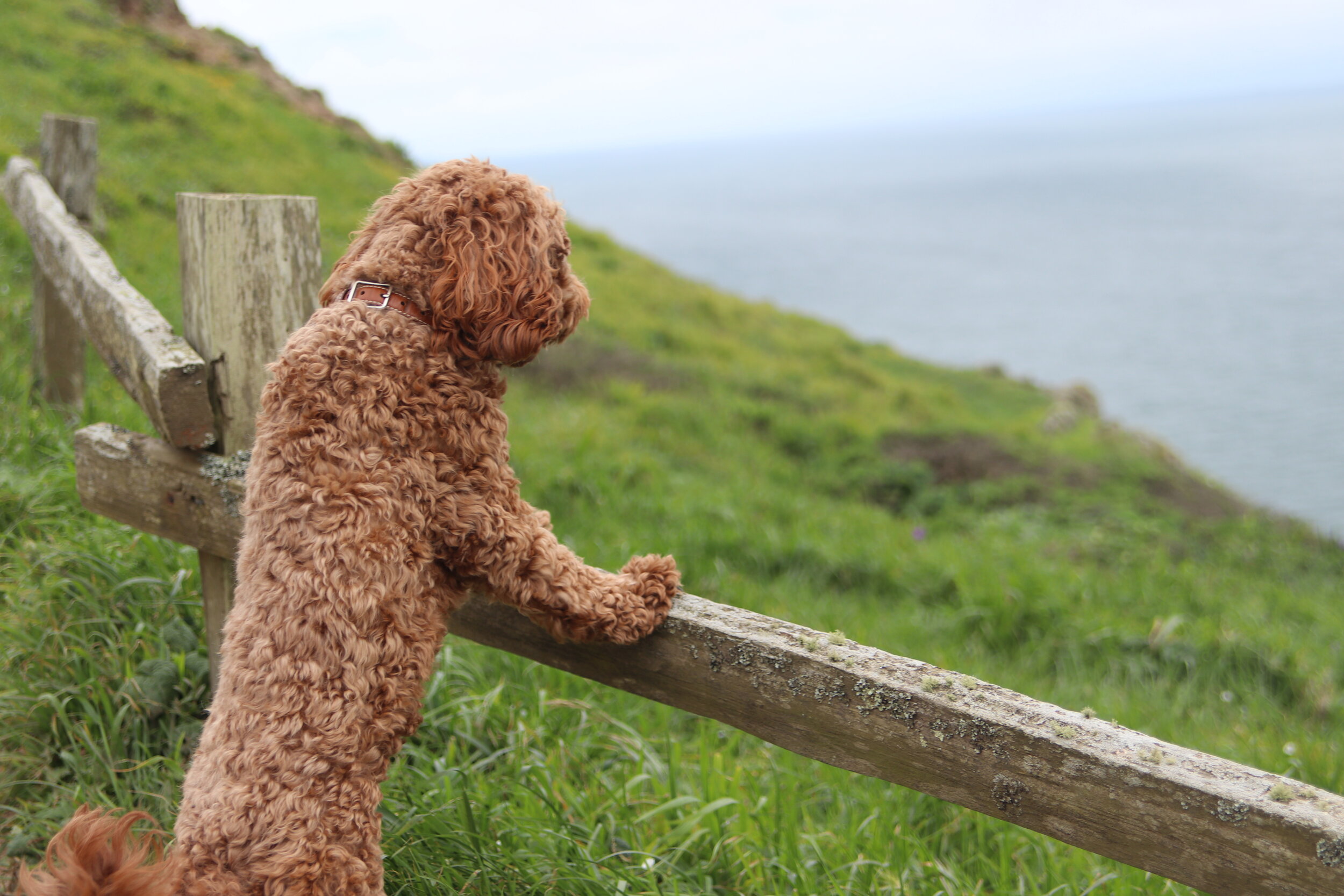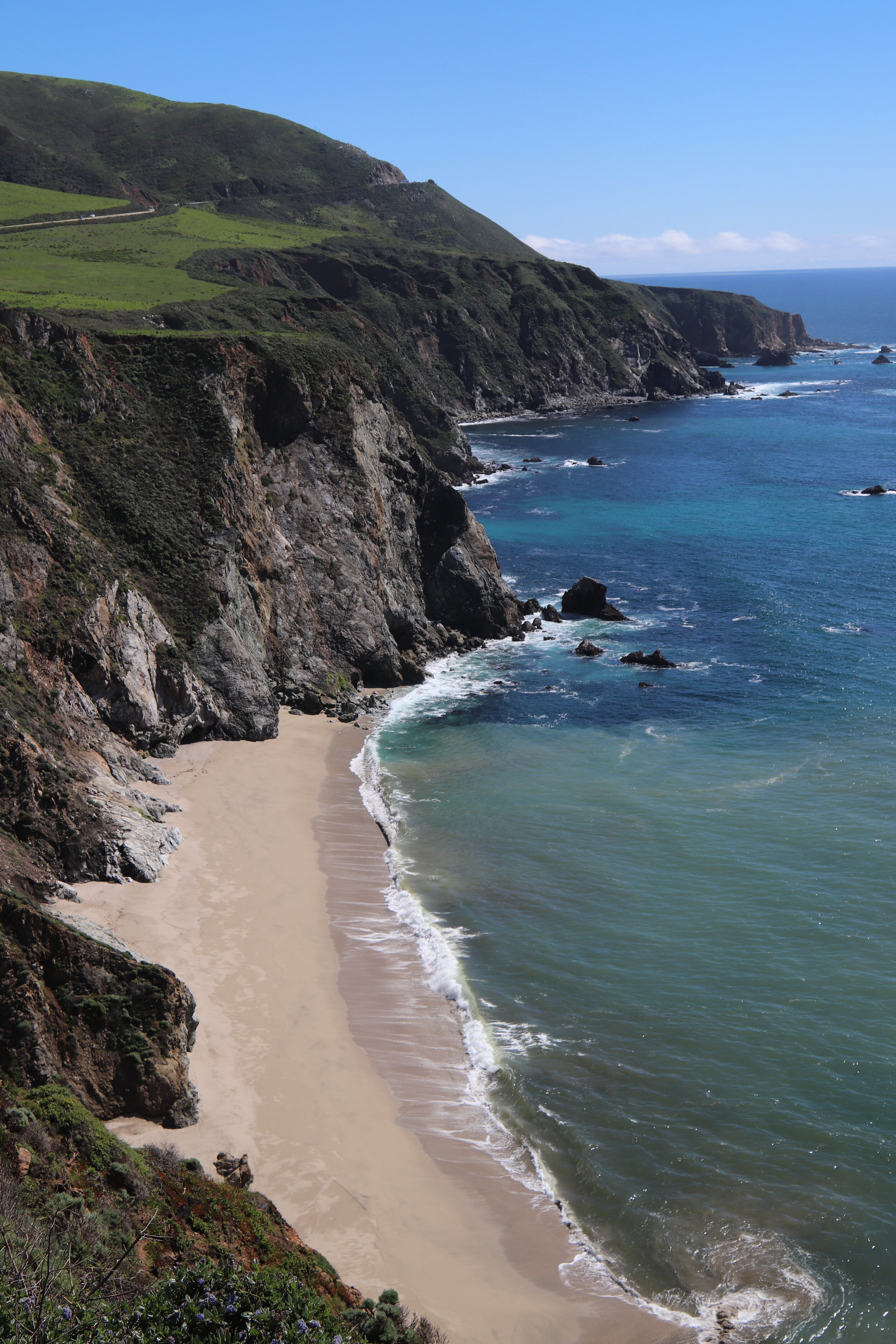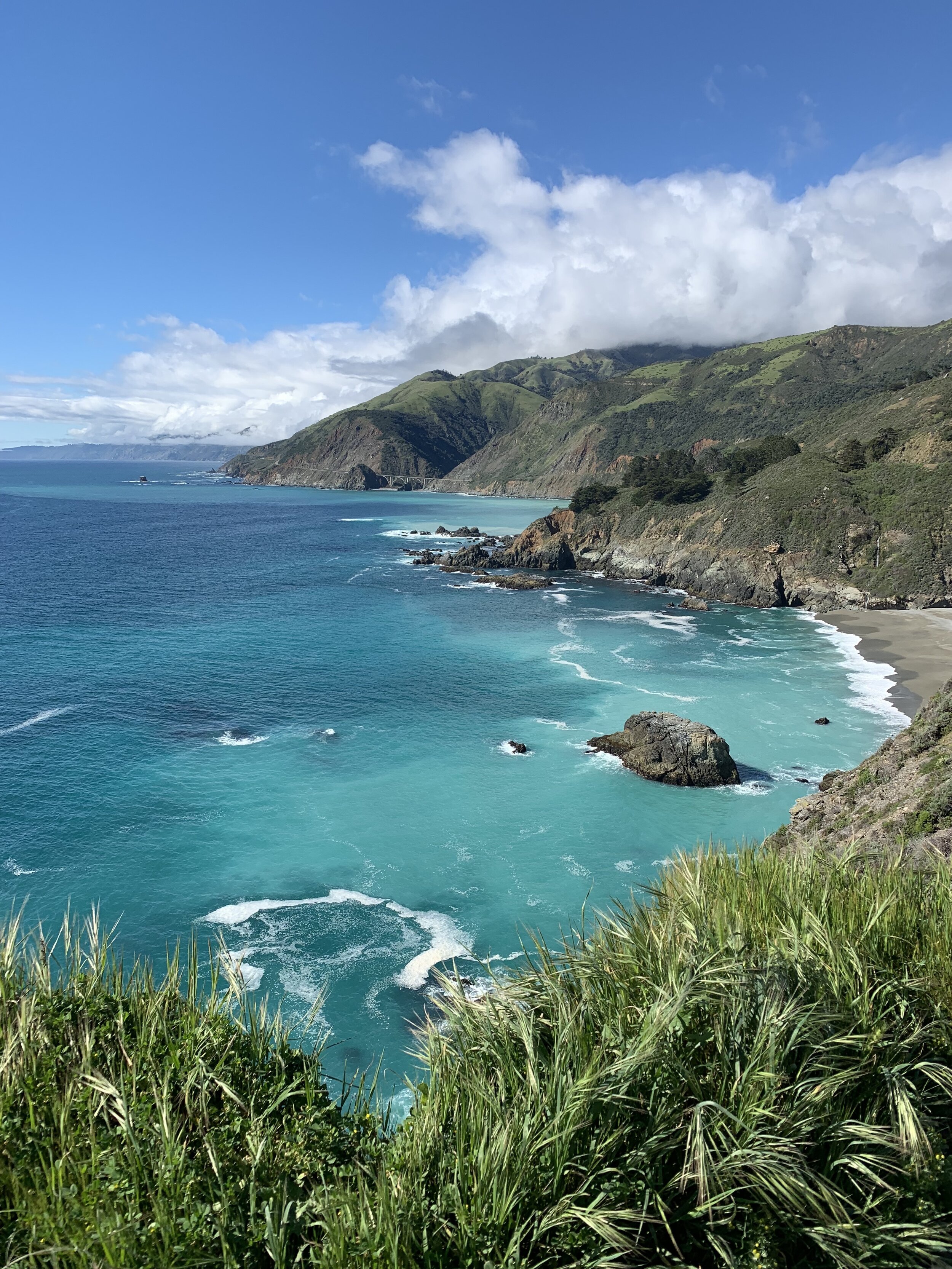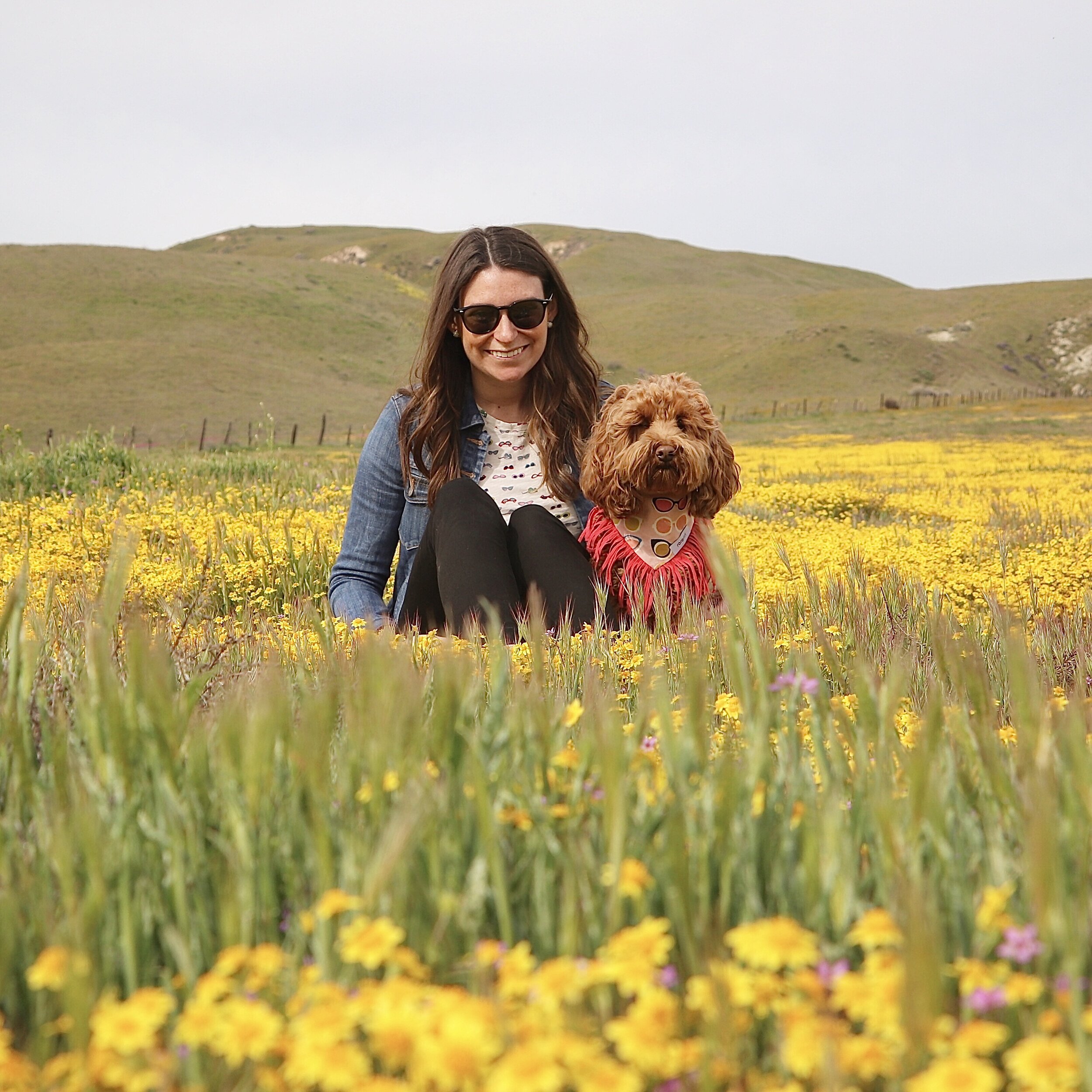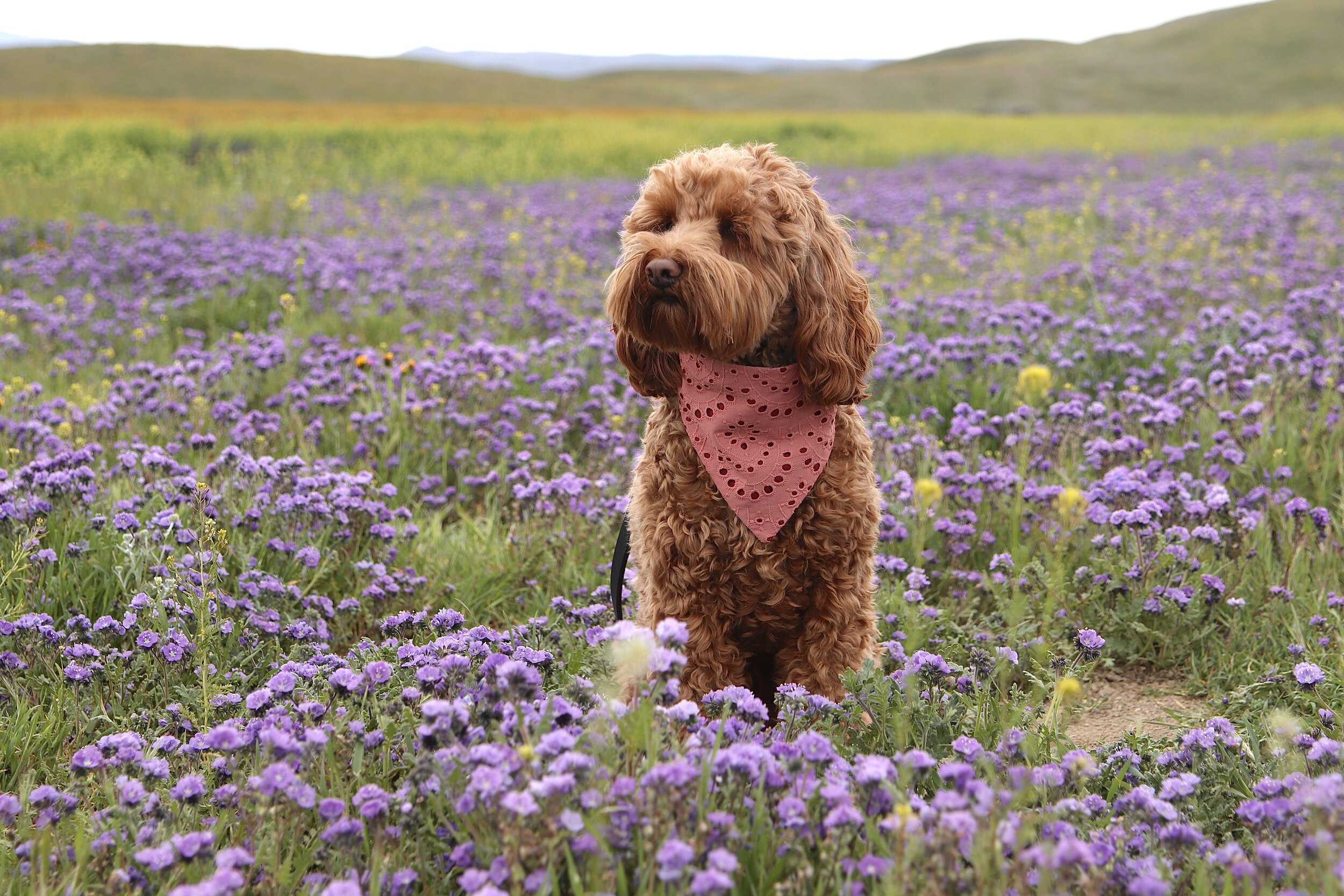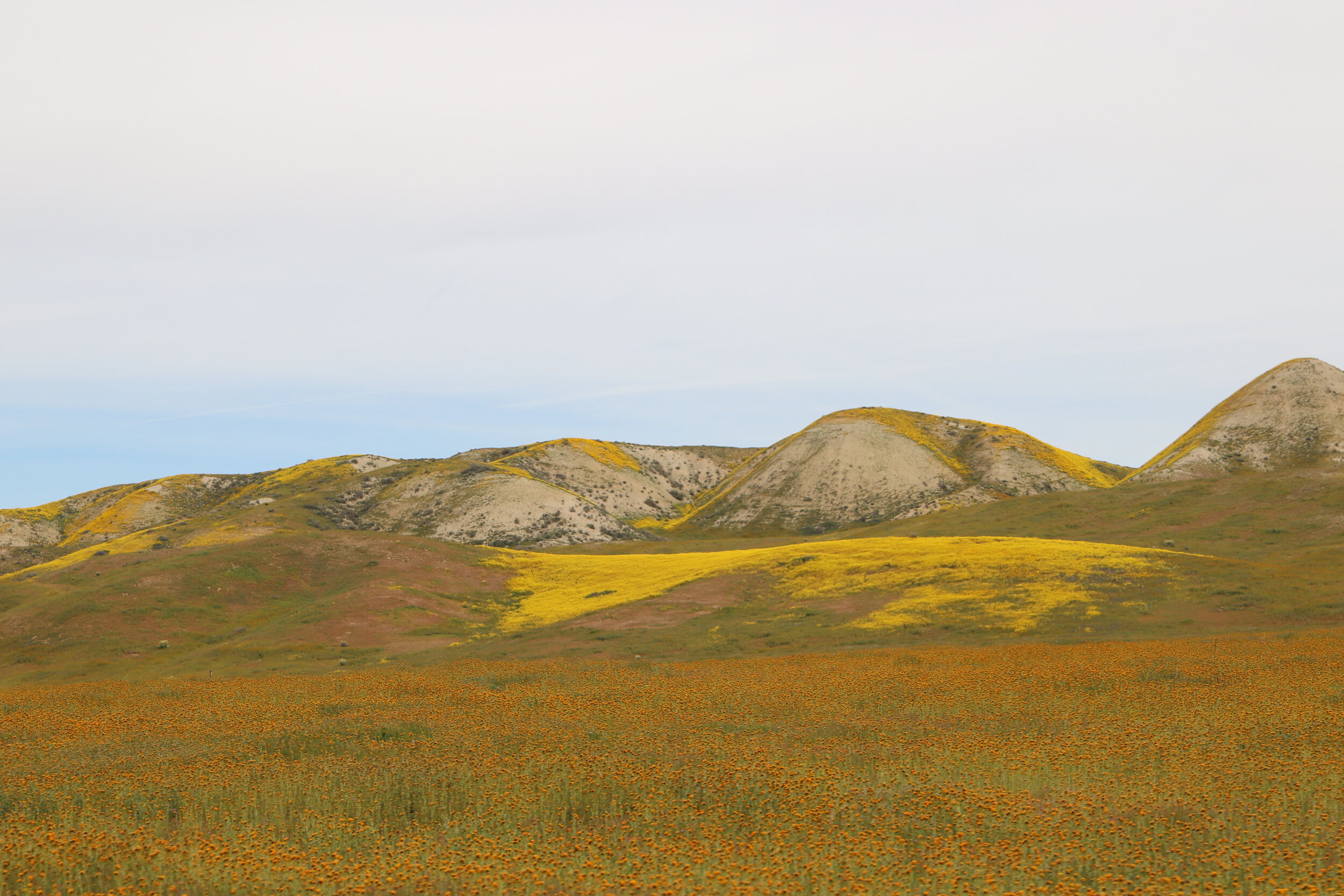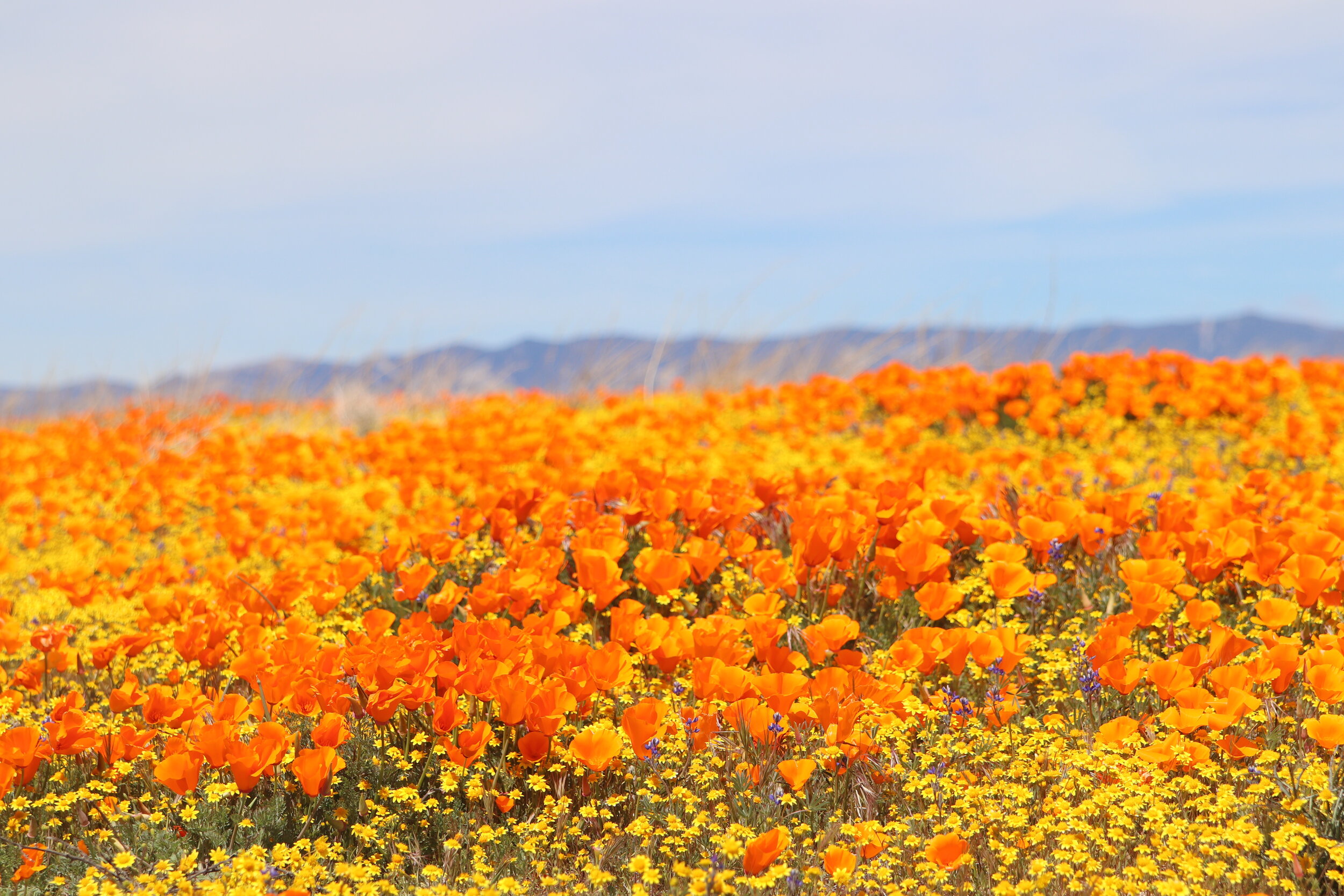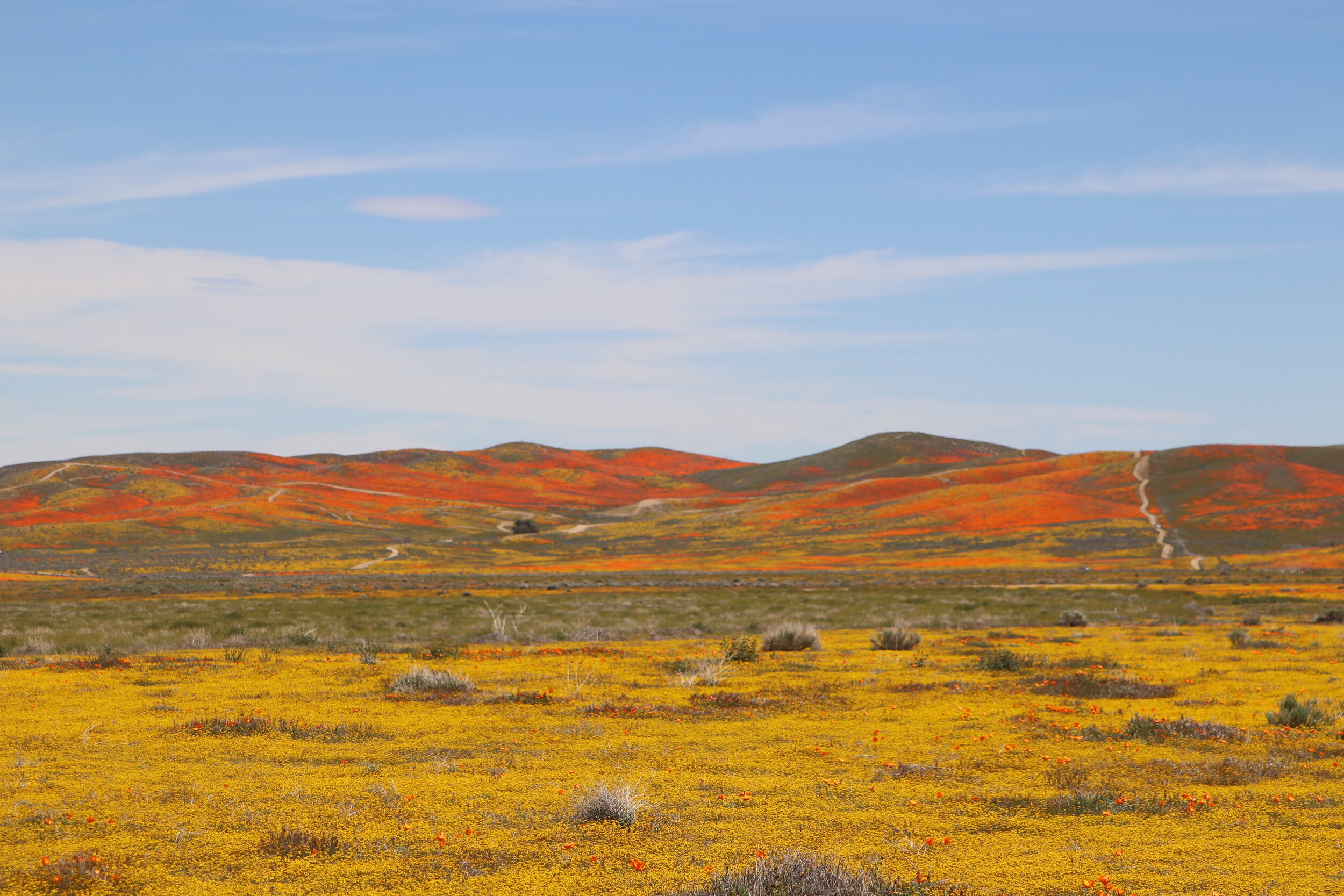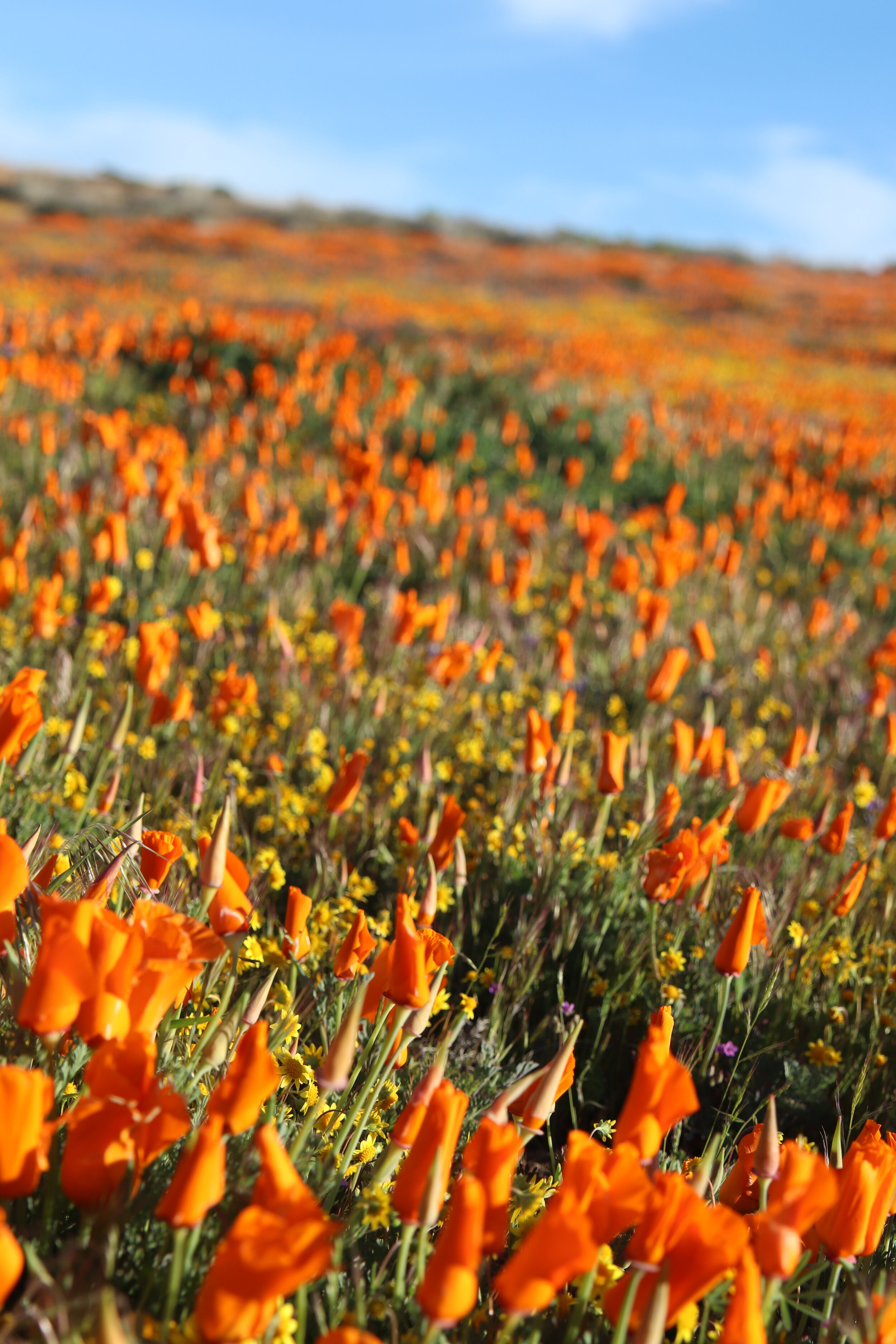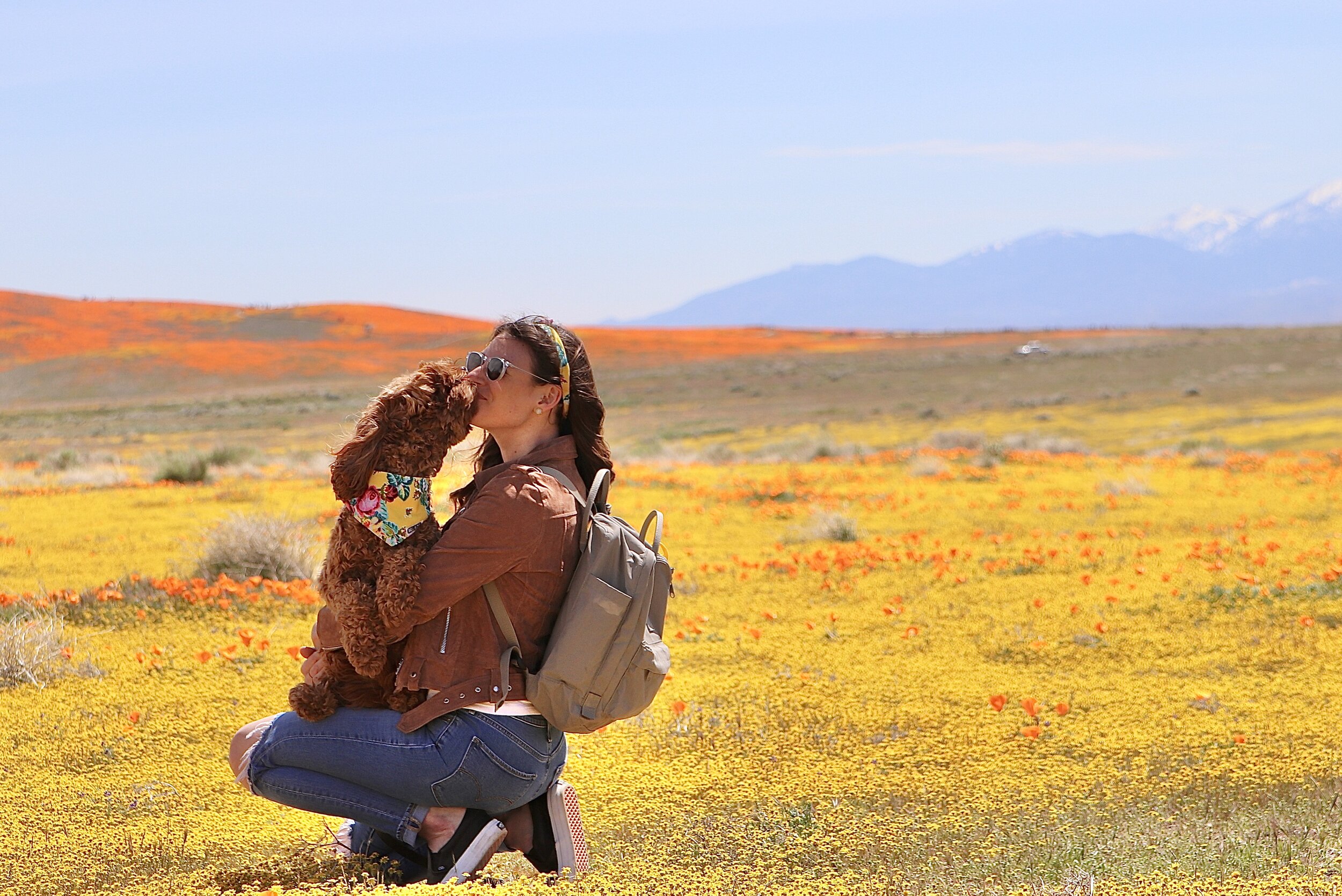Where to see California's Wildflower Super Blooms with a Dog
Disclaimer: Before reading, I want to assure you that no flowers were damaged during our visit and we were very mindful of our interactions with nature. Photography can be a cool thing and all of these photos were positioned to hide the open spaces and paths we were standing/sitting on.
California’s nickname is traditionally attributed to the rush of 49ers who came panning for treasure back in the day. But there are those who insist that the name—the Golden State—has just as much to do with the California poppy, the delicate orange flower that blankets the state each spring.
Every year several wildflowers bloom across the state, but on a rare occasion we experience a wildflower super bloom.
What’s a wildflower super bloom?
Before I tell you what a super bloom is, let me set the stage a bit for our first super bloom experience.
The pawrents and I had just moved to California in the winter of 2018 and our welcome committee was the deadliest fire the state had ever seen - Campfire - followed by a ton of rain for the next two months.
We were so confused by the weather and couldn’t believe this was the sunny state we had opted to move to. But to our surprise, all that rain was a key ingredient for a super bloom (something we had never heard of until moving to California).
A super bloom occurs when all the weather conditions are just right, and that means substantial rainfall in late fall and early winter, cool daytime temperatures and cold nights. As you can imagine, those conditions are rare thereby making a wildflower super bloom so rare that it typically only happens once in a decade. California has experienced two within four years (2017 and 2019). The 2019 wildflower super bloom had more blooms than 2017 and lasted longer (early April).
Totally buying into the rareness of a super bloom (or really just wanting an excuse to take a trip), Doodle Mom, grandma and I all hopped in a car for an impromptu weekend road trip after seeing all the media coverage of vibrant wildflowers sprawling the California hills north of San Francisco all the way down to LA.
While super blooms are still somewhat rare, you can still experience California wildflowers each year. And if you are catching spring fever like us, you’ll want to check out these spots for some of the best blooms.
POINT REYES NATIONAL SEASHORE
Every year, Point Reyes National Seashore attracts flower lovers to its rugged coastal bluffs and mossy Douglas fir forests. The park’s prime spot for a flower walk is the 1.4-mile Chimney Rock Trail, with an overflowing banquet of poppies, owl’s clover, tidy tips, checkerbloom, paintbrush, and Douglas iris.
Given it’s colder in the North, we didn’t see a ton of blooms (tidy tips) at Point Reyes but the scenery was amazing and totally worth the drive North to start our road trip.
With the weather still turning to spring and all the rain, some roads were closed so make sure you stop by the visitor center to understand the conditions throughout the park. It was pretty chilly and windy too up on the bluffs, so make sure you pack a jacket and wear closed toe shoes. You also won’t want to miss the famous Cypress Tree Tunnel. This is also where we found the largest patch of tidy tips in one spot.
BIG SUR
Not a destination for wildflowers per say, but a beautiful time to visit the coast. I’ve never seen the water so blue or the shrubbery so green. If you’re road tripping from North to South on the hunt for blooms, definitely take the extra time to drive Highway 1 and enjoy the jaw dropping sights at every turn.
I mean come on, these photos are not edited at all and Doodle Mom took them on her phone. 😍
CARRIZO PLAIN NATIONAL MONUMENT
Once you make it to central California, you see blooms everywhere you look so be prepared to randomly pull off the road and be amazed at the colorful hills of California.
Sixty miles east of San Luis Obispo, Carrizo Plain National Monument contains the single largest native grasslands remaining in California. At this time of year, Carrizo is nearly smothered in fields of tidy tips and owl’s clover. Flower experts flock here in search of rare and endangered species like San Joaquin woolly-threads (tiny yellow flowers), kern mallow (delicate pink), and California jewelflower, whose wine-colored buds open into white flowers. We had a few rare spottings, but we’re not flower experts so at the time we had no idea what we were looking at.
ANTELOP VALLEY CALIFORNIA POPPY STATE RESERVE
The hills west of Lancaster burst into a colorful display of California poppies, with their silky orange petals, and Antelope Valley California Poppy State Reserve hosts thousands of visitors who come to see the magic each year. This reserve spans 1,800 acres and is located 75 miles north of LA.
If you’re on the hunt for poppies this is definitely the place to go. The reserve itself is not dog-friendly, but the blooms span outside the preserve on both sides of Lancaster Rd. and visitors can pull off into gravel parking lots or off to the shoulder, find a trail, and walk through the fields. The poppies are generally in full bloom March through early April, but check their site for accurate bloom periods each year.
Tip: When visiting fields of poppies, plan to visit later in the day. The blooms open as they receive more sunlight so they’ll be more open like the top photo later in the afternoon verse closed like the bottom right. There’s also no trees for shade, so I’d recommend visiting right before sunset for softer lighting.
tips for seeing super blooms with your pet
Pack plenty of water and snacks - most of these locations are in the middle of nowhere so you’ll want refreshments handy along your journey.
Keep your dog on a leash at all times .
Make sure your dog follows your instructions and can walk closely to you. Many of the paths are very tight and single file. Doodle Mom carried me a lot to ensure I didn’t damage any flowers.
Don’t forget your camera and spring accessories - everywhere you turn your going to want to take pictures.
ADDITIONAL SUPER BLOOM LOCATIONS
There’s several locations across the state for wildflower viewing. Some additional recommendations can be found at afar.com and on visitcalifornia.com. One popular location I’m sure you’ve heard of is Anza-Borrego Desert State Park. This is the most popular wildflower spot in SoCal and the location you saw all over the media during the 2019 super bloom. We were close to visiting this park but saw that the blooms weren’t as vibrant late in the season. We had also read that due to the high traffic of visitors, the park was only allowing shuttle service to get around the park and that visitors should plan for their visit to take several hours.
